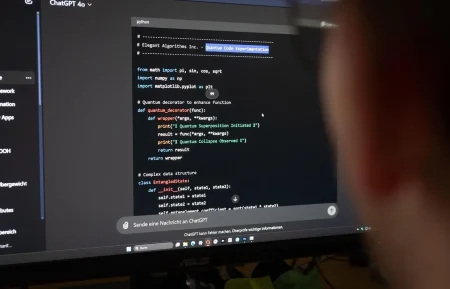Synthesia’s Ascent: AI Video Generation Startup Reaches $4 Billion Valuation
In a significant development in the AI video generation space, London-based startup Synthesia has secured $200 million in fresh funding, nearly doubling its valuation to an impressive $4 billion. According to multiple sources familiar with the matter, Google’s venture capital arm GV is leading this substantial investment round. This remarkable achievement comes just months after Synthesia’s previous funding round of $180 million in January, which had valued the company at $2.1 billion. The rapid increase in valuation reflects growing investor confidence in Synthesia’s business model and market potential, particularly following the company’s April announcement that it had surpassed $100 million in annualized revenue. This milestone demonstrates not just the theoretical promise of AI video technology, but its practical application and revenue-generating capabilities in today’s market.
Synthesia has carved out a distinctive niche in the competitive AI landscape by focusing specifically on enterprise applications rather than consumer-oriented services. The company specializes in transforming mundane corporate training materials into engaging video content featuring AI-generated avatars. This practical approach has attracted major clients including chemical giant DuPont, printer manufacturer Xerox, and Spirit Airlines, all of which utilize Synthesia’s technology to create safety briefings and training videos that can be seamlessly produced in over 100 different languages. This multilingual capability offers a compelling value proposition for multinational corporations seeking to standardize their training materials across global operations while maintaining cultural relevance and accessibility. By focusing on solving specific business problems rather than pursuing the broader “create anything” approach of some competitors, Synthesia has established itself as a trusted partner for enterprises seeking to modernize their internal communications.
The competitive landscape for AI video generation has become increasingly crowded in recent years, with established tech giants and nimble startups vying for market share. Synthesia faces competition from software behemoth Adobe, which continues to integrate AI capabilities into its industry-standard creative suite, as well as from newer players like HeyGen, which recently announced reaching the same $100 million annual recurring revenue milestone. Interestingly, Adobe had previously shown acquisition interest in Synthesia, with the Information reporting in October that discussions for a potential $3 billion deal fell through due to price disagreements. This failed acquisition attempt—with Adobe Ventures already being an investor in Synthesia—highlights the perceived strategic value of the company’s technology and market position. The intensifying competition in this space reflects the growing recognition that AI-powered video generation represents a significant shift in how visual content will be created in the future.
Synthesia’s CEO Victor Riparbelli, recognized in Forbes’ 30 Under 30, has been clear about the company’s strategic direction, emphasizing a deliberate focus on business applications featuring human presenters rather than pursuing the broader creative capabilities showcased by systems like OpenAI’s Sora 2. “We don’t care about AI video as in ‘here’s a thing that can make absolutely anything you can think of,'” Riparbelli stated earlier this year. “We only care about humans and videos and presenters for business content.” This laser focus on solving specific enterprise needs—particularly the challenge of creating professional-quality video content efficiently and at scale—has allowed Synthesia to differentiate itself in a market where more general-purpose AI video tools have captured public imagination but may struggle to develop sustainable business models. By concentrating on practical applications that deliver immediate value to corporate customers, Synthesia has built both technological expertise and business credibility in its chosen domain.
Looking ahead, Synthesia has outlined plans to expand its offerings beyond corporate training to encompass marketing content and other forms of business communication. Riparbelli has noted that the company sees potential in enabling its AI avatars to appear in advertising videos, opening up new revenue streams and use cases beyond internal corporate communications. There are already signs of broader adoption, with some TikTok creators reportedly utilizing Synthesia’s technology to produce content for the popular social media platform. However, the company has recently clarified that its primary focus remains on serving large enterprise customers, suggesting a strategy of building from a position of strength in the B2B market before potentially exploring broader applications. This approach of establishing a solid foundation in enterprise applications before expanding to adjacent markets appears to be serving Synthesia well as it navigates the rapidly evolving AI landscape.
The substantial new investment in Synthesia comes at a time of both excitement and concern around generative AI technologies, particularly those capable of creating realistic video content. As tools like Synthesia become more sophisticated, they raise important questions about media authenticity, the future of creative professions, and potential misuse. However, Synthesia’s business-focused approach and emphasis on solving practical enterprise problems rather than pushing creative boundaries may position it more favorably in terms of responsible deployment. The company’s success represents a broader trend of AI startups finding sustainable business models by addressing specific industry pain points rather than pursuing more general or consumer-oriented applications. With its freshly secured funding and elevated valuation, Synthesia appears well-positioned to continue its growth trajectory and potentially shape the future of business video production as AI tools become increasingly integrated into corporate communications workflows.















